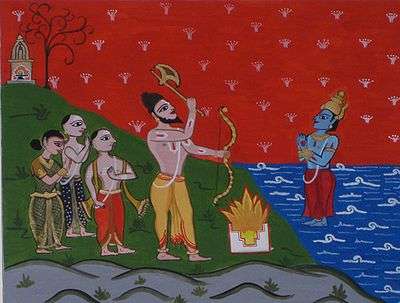Kanara
| Kanara Canara, Karavali | |
|---|---|
|
Canara region shown in Saffron | |
| Country |
|
| State | Karnataka |
| Region | Konkan / Canara |
| Largest city | Mangalore |
| Headquarters | Mangalore, Udupi, Karwar |
| Talukas | Karwar, Ankola, Kumta, Honnavar, Bhatkal, Sirsi, Siddapur, Yellapur, Mundgod, Haliyal, Joida, Mangalore, Sullia, Puttur, Belthangady, Bantwal, Udupi, Karkala, Kundapur, Byndoor, Brahmavar |
| Area | |
| • Total | 18,730 km2 (7,230 sq mi) |
| Population (2011) | |
| • Total | 4,633,037 |
| • Density | 250/km2 (640/sq mi) |
| Languages | |
| • Official | Kannada |
| • Regional | Tulu, Konkani, Kundapura Kannada, Havyaka Kannada, Are Bhashe, Beary language |
| Time zone | IST (UTC+5:30) |
| Vehicle registration | |
| Coastline | 300 kilometres (190 mi) |
| Sex ratio | 1040 ♂/♀ |
| Literacy | 87.03% (1st in Karnataka) |
The Kanara (also known as Canara, Karavali and Coastal Karnataka) region of Karnataka, comprises three coastal districts, namely Dakshina Kannada and Udupi district (South Canara) and Uttara Kannada (North Canara). Kanara forms the southern part of the Konkan coast. The length of this region from north to south is around 300 kilometres (190 mi) while the width varies from 30 to 110 kilometres (19 to 68 mi). The region is characterized by swaying palms and swift brooks running towards the Arabian Sea.
Etymology

According to legend, Parashurama, an avatar of Vishnu, retrieved Kanara from the sea by throwing his axe into the sea. The sea fell back to the place where his axe fell. Hence, the region is sometimes called Parshurama Kshetra.
According to historian Severino da Silva, the ancient name for this region is Parashuram Srashti (creation of Parashuram).[1] He and Stephen Fuchs say that the name Canara is the invention of Portuguese, Dutch and English people who visited the area for trade from the early 16th century on wards. The Bednore Dynasty, under whose rule this tract was at that time, was known to them as the Kannada Dynasty, i.e., the dynasty speaking the Kannada language. The letter 'd' being always pronounced like 'r' by the Europeans, the district was named by them Kanara (or Kannada). This name was retained by the British after their occupation of the district in 1799, and has remained ever since. However, they also say that this issue is controversial.[2]
Culture
Dance
Yakshagana is a classical dance drama popular in the districts of Dakshina Kannada, Udupi, Uttara Kannada and few Malnad regions in Karnataka. This theater art involves acting, dance, dialogue, music, songs, story and unique costumes. While dance and songs adhere to well established 'talas', very similar to classical Indian dance forms, acting and dialogues are created spontaneously on stage depending on the ability of the artists. This combination of classical and folk elements makes Yakshagana unique from any other Indian art. It would be considered a form of opera to the western eye. Traditionally, Yakshaganas start late in the night and run the entire night. Bagavatha, the background singer, who is also the director of the story controls the entire proceedings on stage. He/she along with the background musicians, who play 'chande' and 'maddale' form the 'himmela'. The actors who wear colorful costumes and enact various roles in the story form the 'mummela'. There are many professional troops in Karnataka. In spite of the competition from modern movie industry and television, these troops arrange ticketed shows and make a profit. Apart from the individually arranged shows in villages, inviting well known professional artists like Sri Chittani Ramachandra Hegde and Kondadakuli Ramachandra Hegde, provides an opportunity for local talents to act with the legends. Yakshagana is sometimes simply called aataā (meaning play) in both Tulu and Kannada. Yaksha-gana literally means the song (gana) of a yaksha. Yakshas were an exotic tribe mentioned in the Sanskrit literature of ancient India.
Geography
Coordinates: 14°53′N 74°35′E / 14.883°N 74.583°E
The three districts in the region, Uttara Kannada (North Canara), Udupi, Dakshina Kannada (South Canara) have their headquarters in Karwar, Udupi, and Mangalore respectively. The region is bounded on the east by the Western Ghats and on the west by the Arabian Sea. The coastal strip between the Western Ghats and the sea, including Kanara and the state of Goa and coastal Maharashtra to the north, is known as the Konkan coast, while the coast of Kerala is known as the Malabar coast.
See also
- Mangalore
- Mangalore International Airport
- New Mangalore Port
- Udupi
- Manipal
- Bhatkal
- Uttara Kannada
- Karwar
- Gokarna
- INS Kadamba
- Dakshina Kannada
- Yakshagana
- Udupi cuisine
- Mangalorean cuisine
- National Highway 66
Notes
- ↑ Silva 1958, p. 74
- ↑ Silva & Fuchs 1965, pp. 1§2
References
- Silva, Severine; Stephen Fuchs (1965). The Marriage Customs of the Christians in South Canara (PDF, 2.48 MB). 2. 24. Asian Folklore Studies, Nanzan University (Japan). Retrieved 2009-04-23.
- Silva, Severine (1961). History of Christianity in Canara. I. Coompta, North Canara: Star of Kanara Press.
External links
| Wikivoyage has a travel guide for Kanara. |
